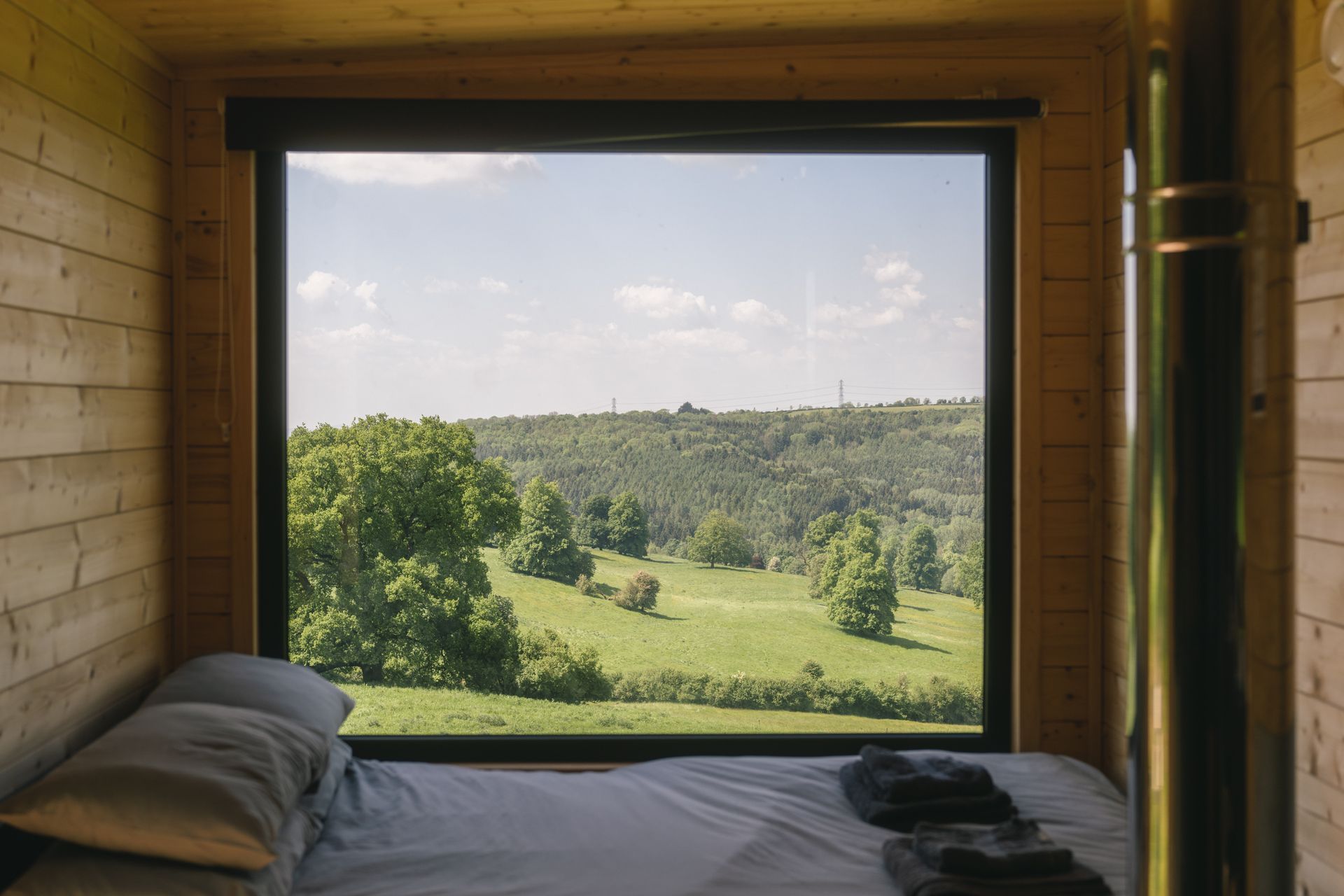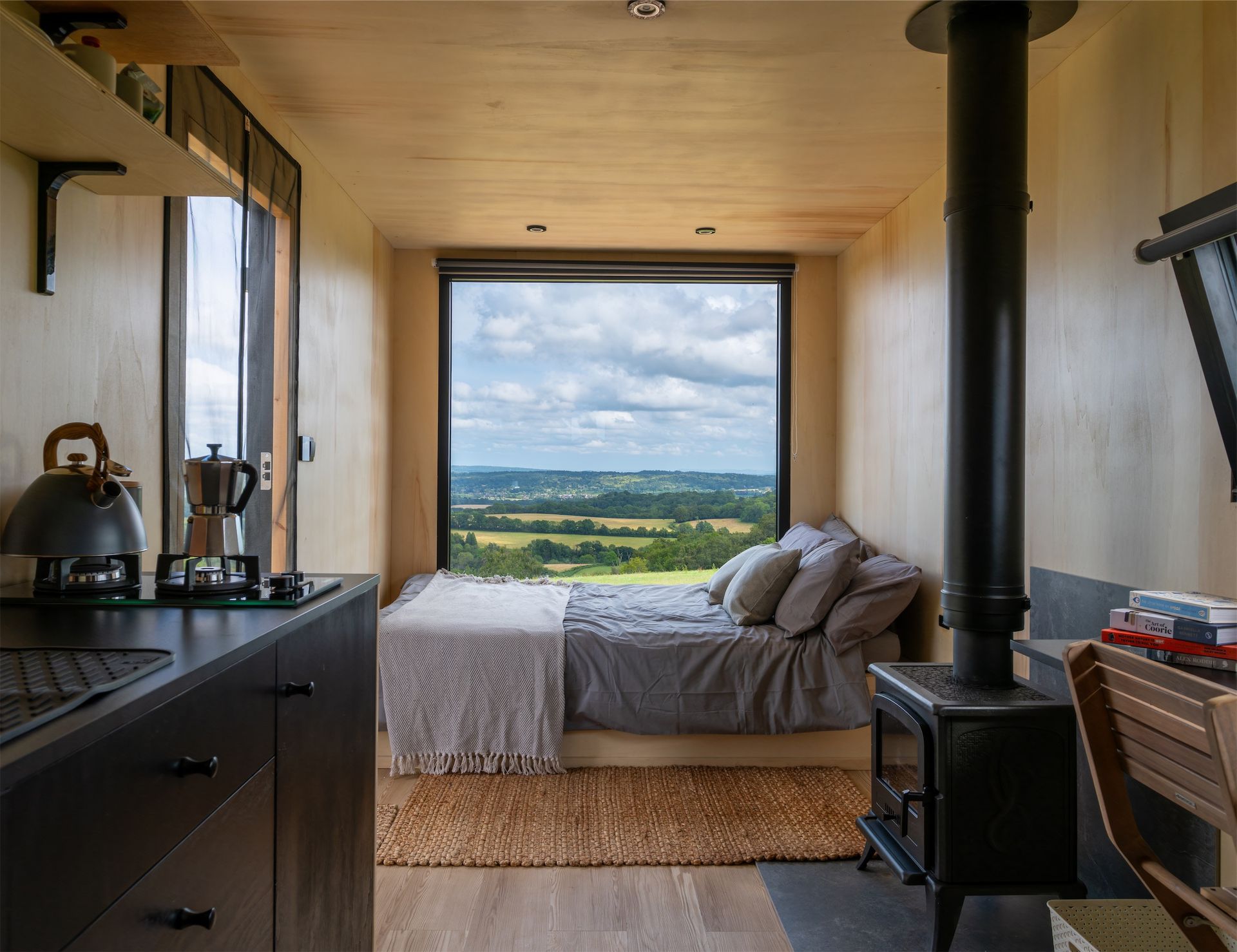Our Blog
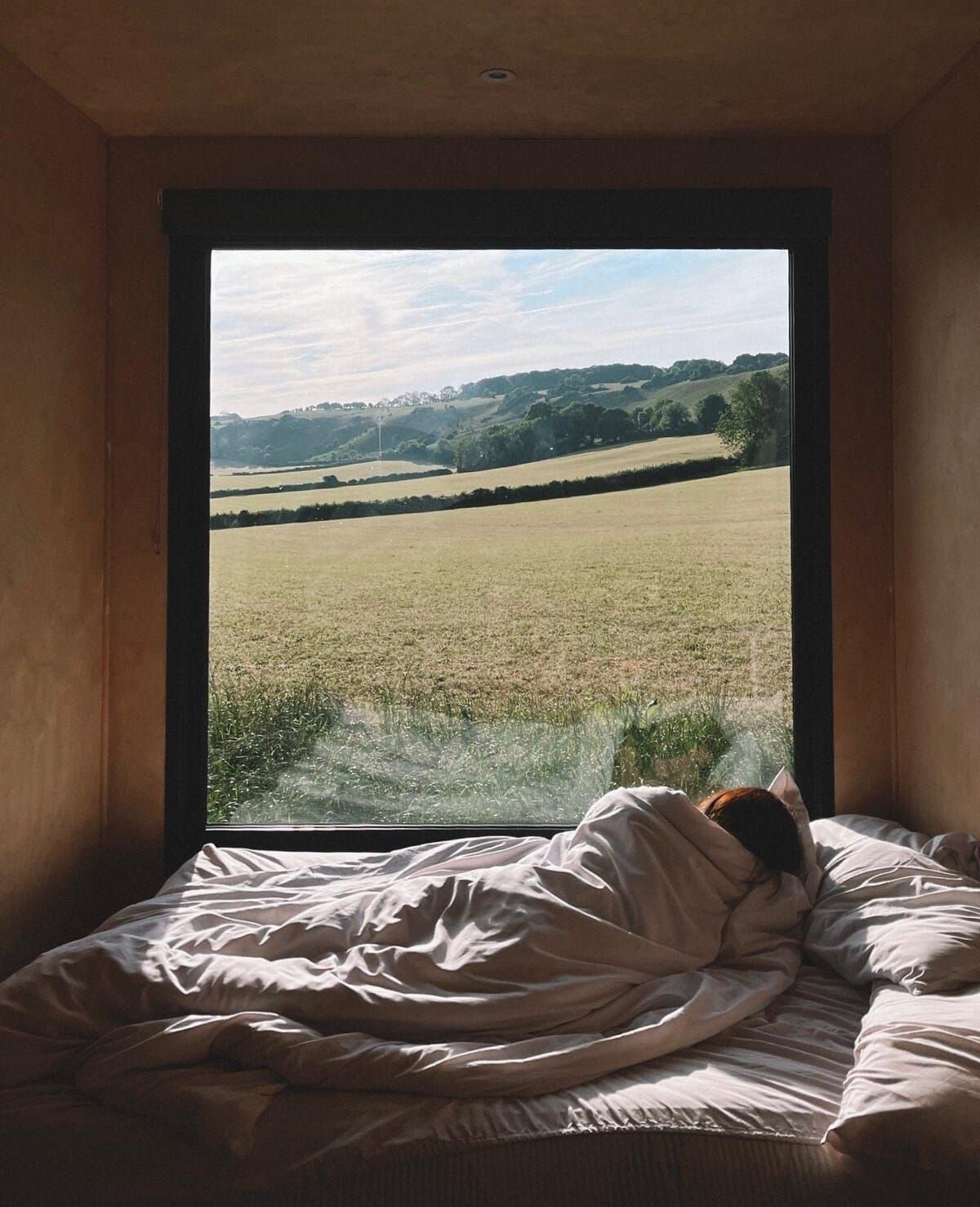
No emails. No social media scroll. No endless notifications. Just the two of you, good food, a cosy cabin, and nature as your backdrop. That’s what an off-grid romantic getaway is all about - space to breathe, time to really look at each other, and moments that feel like they could have been lifted from a love story. Mornings that start slow Forget alarms and rushing around. Mornings here are slow and peaceful - you wake up to birdsong, sunlight spilling through the windows, and maybe a lazy coffee in bed before the day begins. There’s no pressure to “do” anything except enjoy being together. Cooking together... your way One of the unexpected joys of staying in an off-grid cabin is cooking together. Light the stove, pour a glass of wine, and make something simple but delicious - pasta with fresh herbs, steak on the fire pit, or pancakes in the morning. With no TV in the background or phones on the table, it’s just you, the food, and the quiet rhythm of cooking side by side. Afternoons exploring Take a long walk through the woods, wander along a beach, or find a trail that leads to a cosy pub. The point isn’t to tick off landmarks but to talk, laugh, and enjoy each other’s company. Our cabins are set in Areas of Outstanding Natural Beauty, so every step outside is postcard-worthy. Evenings under the stars When the sun sets, you realise just how magical the night can be without streetlights or screens. Sit outside with a blanket, light the fire pit, and watch the stars slowly appear. It’s quiet enough to hear the crackle of the fire and the sound of your own thoughts. Why going off-grid works for couples It’s not about being off-grid for the sake of it but about making space for each other. Without the constant pull of work emails or social media, you notice the little things again: the way they smile, the way they make tea, the way your conversations wander late into the night. Whether it’s your first trip together or you’ve been a couple for years, an off-grid romantic escape is a reminder of why you fell for each other in the first place. And when you head home, you take that feeling with you.
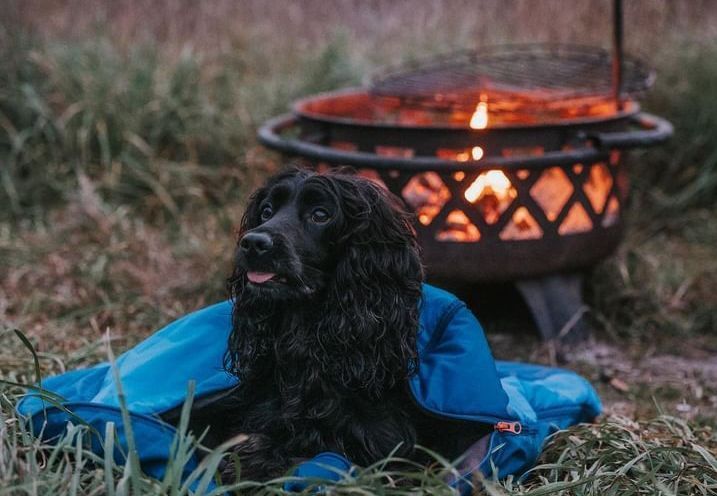
Every single one of our cabins is dog-friendly, so you never have to choose between a proper break for you and a kennel stay for them. From coastal fields in Dorset to quiet woodland in East Sussex, and from rolling Cotswold hills to wide open Canterbury meadows, each of our locations is hand-picked for space, scenery, and the kind of walks you’ll still be talking about months later. Off-grid, not off-comfort Going “off-grid” doesn’t mean giving up your creature comforts. Our cabins are kitted out with hot showers, proper beds with thick duvets, kitchens with everything you need, and wood-fired stoves for those cosy post-walk evenings. It’s luxury you can actually relax into — without worrying about muddy paws or being too far from nature. Walks from your door The beauty of our sites is that you don’t need to get in the car to find a great walk. Cotswolds – Miles of trails, village loops, and pub walks like Dunkertons Cider Taproom or The Frogmill. Dorset – Coastal paths with sweeping sea views and open fields to roam. East Sussex – Woodland tracks, hidden clearings, and easy links to the South Downs Way. South Downs - Consistently amazing views wherever you go, always able to end in a cosy pub Canterbury – Big skies, rolling meadows, and riverside routes that lead to some of Kent’s best country pubs. Pubs that welcome paws We’ve personally tested the nearby pubs (someone had to). Think crackling fires, water bowls by the door, and bar staff who greet your dog before you. Whether it’s a post-walk pint, Sunday roast, or a coffee stop, you’ll find a warm welcome in every location. Things to know before you book One dog is welcome in each cabin Please bring their bed or blanket so they feel at home Outdoor space is private but not fully enclosed, so leads are a must for wanderers Our locations are rich in wildlife, so please keep dogs under control near livestock and nesting birds A dog-friendly trip should be just that - space for you and your dog to relax, roam, and recharge. So pack the lead, bring their favourite biscuits, and escape somewhere where the walks are wild, the nights are cosy, and the only time you’ll check the time is to see when the sun sets.
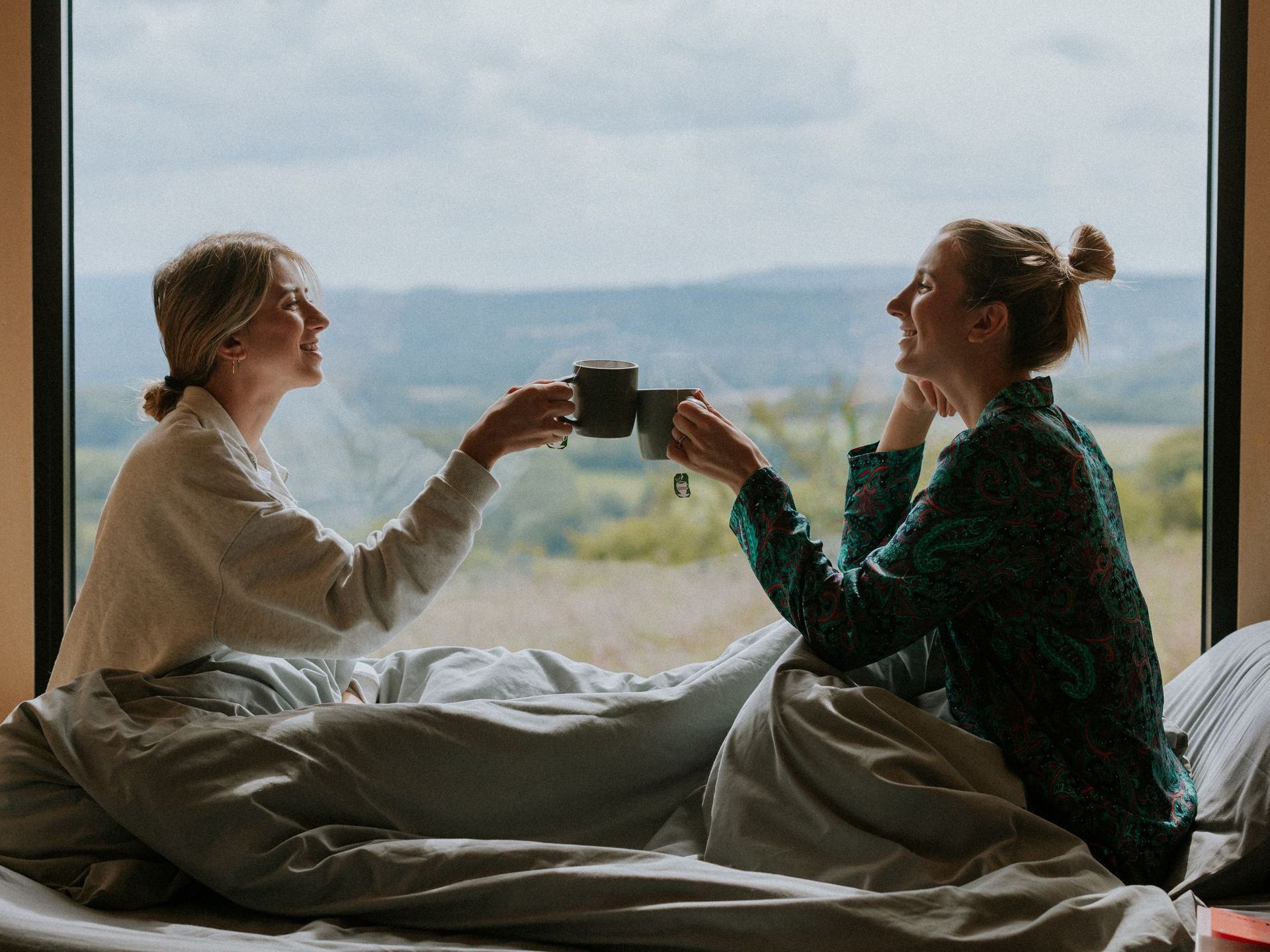
You don’t need to jump on a plane to feel like you’ve escaped. Some of the most romantic getaways are right here in the UK tucked away in Areas of Outstanding Natural Beauty, where the only things breaking the silence are birdsong and maybe the sound of a pint being poured in a pub garden. Here are a few of my favourite spots, all within about two hours of London, for a weekend that’s more about slowing down, switching off and enjoying each other’s company. 1. The Cotswolds – Hills, Views & Cosy Pubs Journey time: 1.5–2 hours by train or car The Cotswolds just has that thing about it. Our cabins in Andoversford look straight out over the hills — perfect for slow mornings in bed with coffee, watching the sunrise. You can wander down to Dunkertons Cider for an afternoon of drinks and street food, or head to The Frogmill for dinner by candlelight. If you’d rather disappear into the trees, our woodland cabins in Chedworth give you complete privacy. It’s the kind of place where you lose track of time — just you, the birds, and the sound of the wind in the leaves. 2. South Downs – Big Skies & Coastal Air Journey time: 1.5–2 hours by train or car If your idea of romance comes with a sea breeze, head for the South Downs. Rolling chalk hills, winding trails and those huge, open skies. Take a picnic, follow the South Downs Way, and finish the day watching the sun go down with a blanket and something cold to drink. 3. Dorset – Clifftops & Coastal Walks Journey time: Around 2 hours by train or car For couples who love the coast, our Dorset cabins are set in peaceful fields but close enough to the Jurassic Coast for a day of exploring. Walk the clifftops, potter around little fishing villages, and end the day with fish and chips on the beach. Back at the cabin, light the firepit and let the evening drift by. 4. East Sussex – Woodland Hideaways & Country Inns Journey time: Around 2 hours by train or car There’s something special about being tucked away in the woods. Our East Sussex cabins sit at the edge of a willow wood, with trails that lead to country pubs and pretty villages. Inside, you’ve got big panoramic windows so you can stay warm and still feel like you’re right out in nature. Why AONBs Just Work for Romance Areas of Outstanding Natural Beauty aren’t just “nice views” but protected landscapes, so the peace you find here has been preserved for generations. You’re away from the noise, but close enough to dip into a village for a pint or a meal whenever you fancy. Little tip Whatever you do, spend at least one night sat under the stars — they shine a lot brighter out here than they ever do in London.
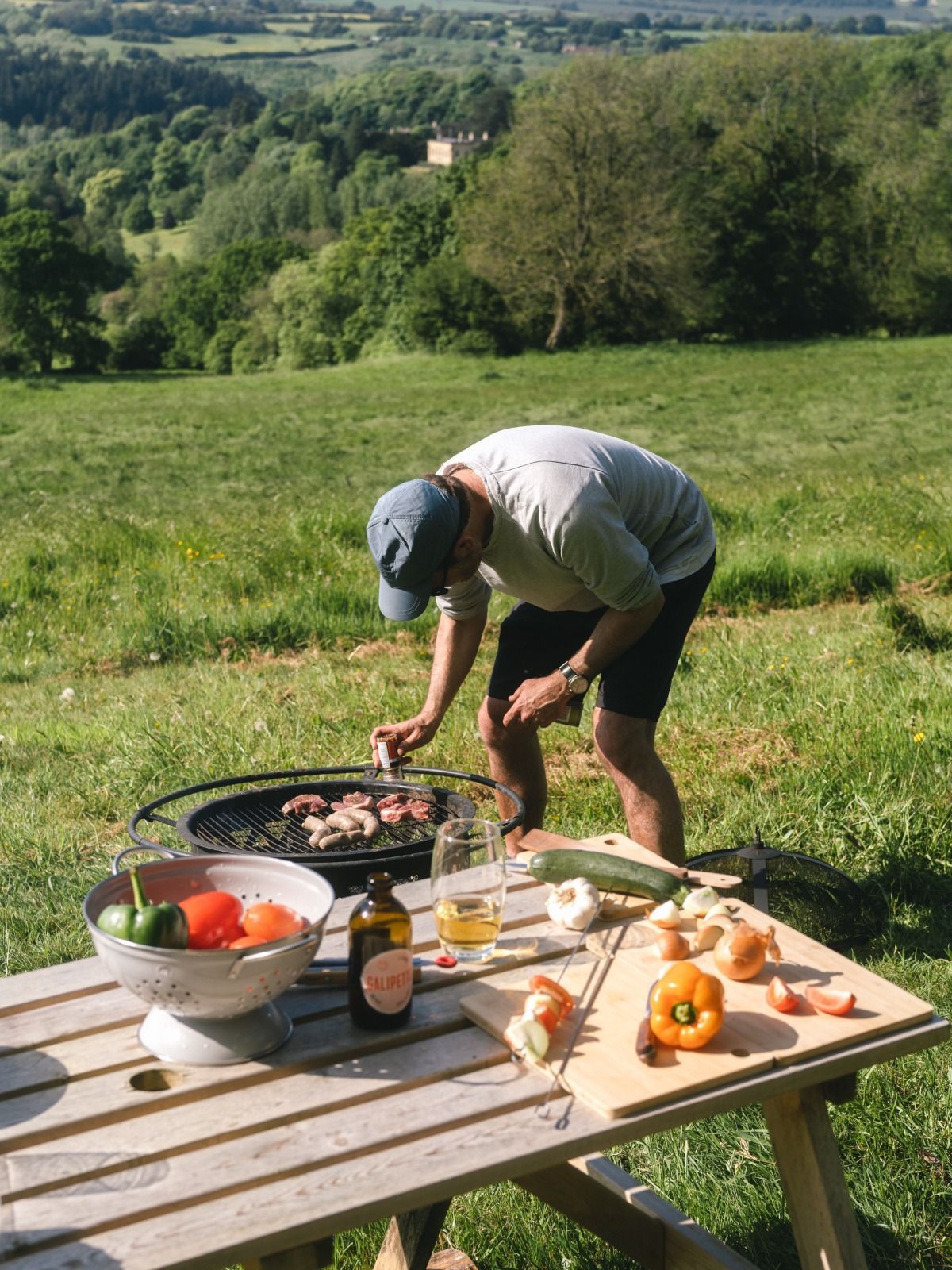
If you’re staying in our Andoversford cabins (Miraz, Cornelius, Rabadash), you’re in for a treat. You’ve got rolling Cotswold hills right outside your window, huge open skies, and the choice between losing yourself in peaceful countryside or heading somewhere lively for great food and a pint. This part of the Cotswolds really does have the best of both worlds - wild, open landscapes when you want space and quiet, and some brilliant pubs and taprooms when you’re in the mood for company. We’ve spent plenty of time here ourselves, so here’s what we’d recommend. Pubs & Taprooms The Frogmill The kind of pub you picture when you think “Cotswolds” — old stone, cosy beams and a huge garden for summer pints. They do a great breakfast, a proper Sunday roast, and everything in between. It’s about a 40-minute walk or a 6-minute drive from the cabins. Dunkertons Park If you only do one thing while you’re here, make it this. They brew their cider on site, there’s usually live music (Idris Elba DJ’d here once), and the street food is seriously good. It’s a 2-mile walk along the Cotswold Way or just a short drive if you want to save your legs. Foodie Spots Worth the Trip Daylesford Organic – The farm shop everyone talks about. Great for picking up supplies or just browsing. KNEAD Elkstone – Small bakery, big flavour. Sourdough, pastries, and a proper coffee. Fire & Flow Coffee Roastery – For anyone who takes their coffee seriously. Walks From Your Door The Cotswold Way – Join the trail right from Andoversford for hills, valleys and wide-open views. Village Loops – SO many cute cotswolds villahes nearby for an easy stroll and full of charm. Wander through Bibury’s Arlington Row or visit Bourton-on-the-Water, Stow-on-the-Wold and Broadway for postcard-perfect streets. Stroll along Copse Hill Road in Lower Slaughter — known as Britain’s most romantic street. Visit Sudeley Castle for historic gardens and rare pheasants. Have a pint at The Porch House in Stow-on-the-Wold, believed to be Britain’s oldest pub. Take on more of the Cotswold Way if you’re feeling energetic. A Few Local Highlights Bourton-on-the-Water is often called the Venice of the Cotswolds and is worth the short trip. Stow-on-the-Wold has antique shops, tea rooms and one of the most photographed church doors in the country. A little tip from us... On a sunny afternoon, walk to Dunkertons, spend a couple of hours with good food and cider, then wander back as the sun sets over the hills. Finish the evening sat outside your cabin, firepit going, and nothing but the sound of the countryside.
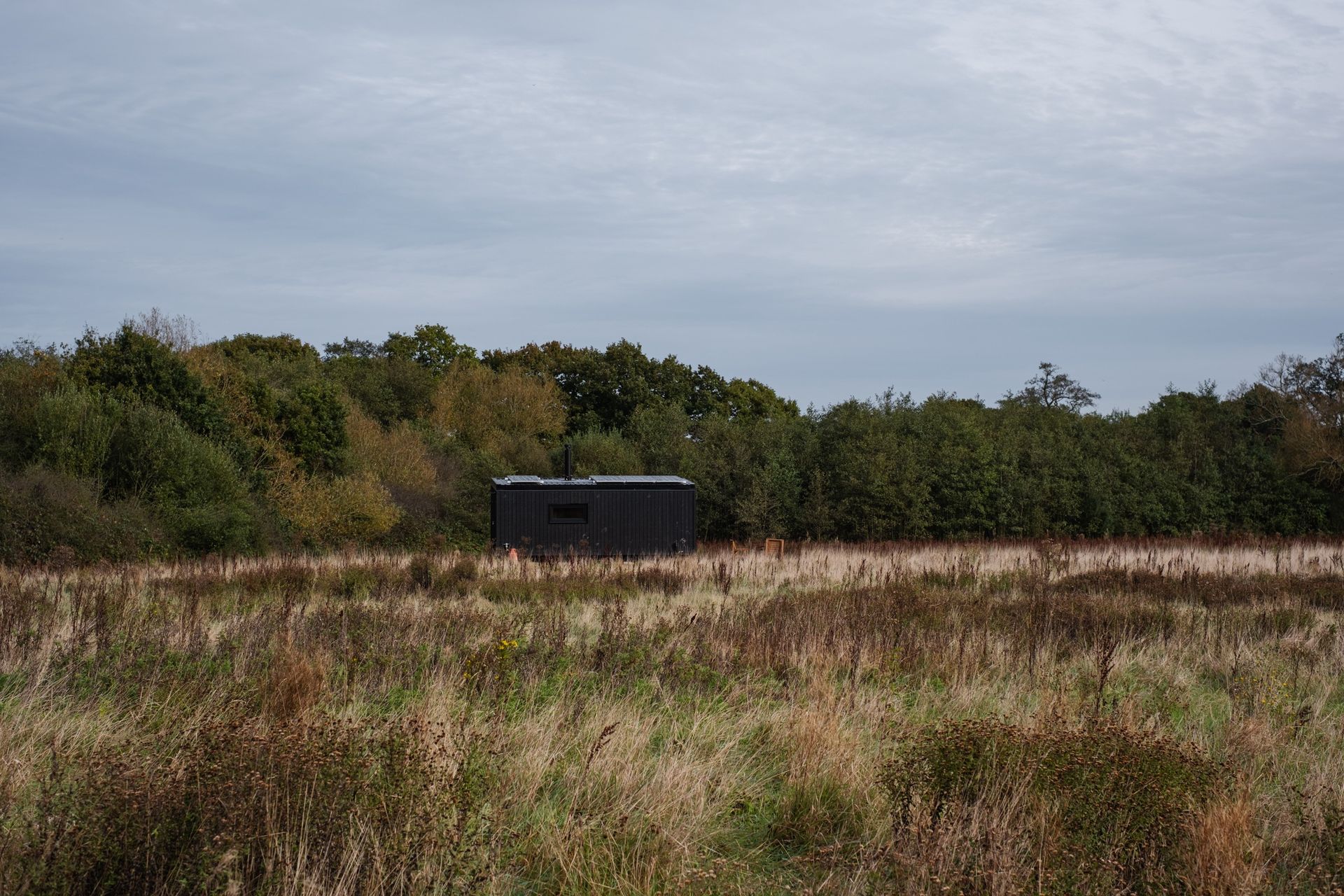
Maybe you're feeling a little burnt out, craving some fresh air, or just itching to get away from traffic and tiled roofs for a while. Whether you're headed to our cabins in the South Downs, Cotswolds, Dorset, East Sussex, or Canterbury, here's something worth thinking about - wellness doesn't always come in a bottle, a spa, or a screen-free phone. Sometimes, it comes with muddy boots, morning mist, and a mug of something hot in your hands. Let’s talk about what it feels like to breathe a bit deeper. Where stillness feels like a skill. Life moves fast. We all know that. But standing in a field surrounded by nothing but rolling hills or wild trees? It does something different to your body. Your breath slows. Your shoulders drop. You stop clenching your jaw. Being in nature doesn't just look pretty - it physically changes how your nervous system responds to stress. It's quiet, yes, but not empty. It’s a space that gives you permission to do nothing for a while, and honestly, how often does that happen? Tiny Moments, Big Impact You don’t need a big itinerary. The best bits are often the smallest: The birdsong that kicks off at sunrise Your dog chasing shadows through a field The smell of woodsmoke as the fire crackles Spotting deer from your cabin window Watching clouds roll past like slow ships These moments aren’t flashy. They’re grounding. And grounding is wellness in its purest form. You Time, Done Simply Forget infinity pools. An outdoor shower under the sky hits different especially when you’ve just returned from a walk through the woods. Add a cosy bed, a warm fire, and a kitchen with just the right amount of everything you need, and suddenly you’ve got a version of self-care that doesn’t need Wi-Fi or a spa robe. Move a Little, Rest a Lot We’re not saying hike a mountain. (Unless you want to!) But whether it's a walk to a pub through winding lanes or a stomp up a hill just to feel your legs again, moving in nature feels... good. There's something deeply human about walking with no goal other than to see what’s around the corner. And when you're done? Curl up in your cabin with a hot drink, your dog asleep at your feet, and nothing asking for your attention. Hear It From Our Guests.... “I cannot wait to visit all your cabins! It's the calm I didn't realise I needed.” – Amy “The deer, the owls, the stars. It felt like everything slowed down and got simpler.” – Flore “A beautiful, slow weekend. Just what I needed to catch my breath again.” – Sarah 📍 Where You’ll Find Us We’re tucked away in some of the UK’s most peaceful places: South Downs National Park The Cotswolds Dorset East Sussex Canterbury Each one offers a slightly different flavour of calm—but all of them give you the space to switch gears. Sometimes the best thing you can do for your wellbeing is change the scenery, not the schedule. Our cabins aren’t here to fill your time. They’re here to make it yours again. Ready to come and breathe for a bit?

